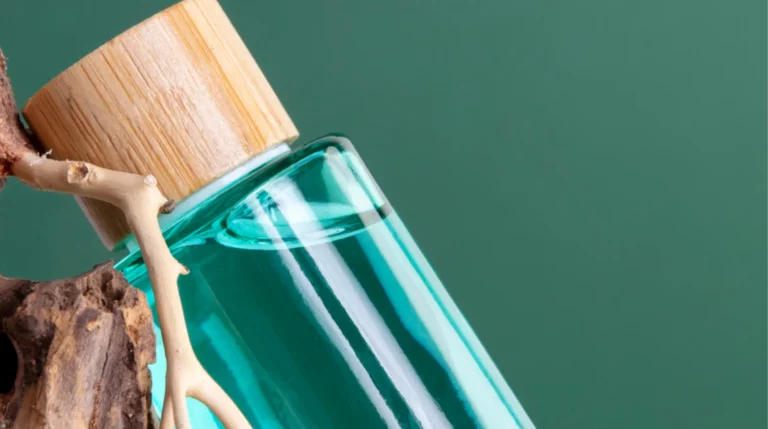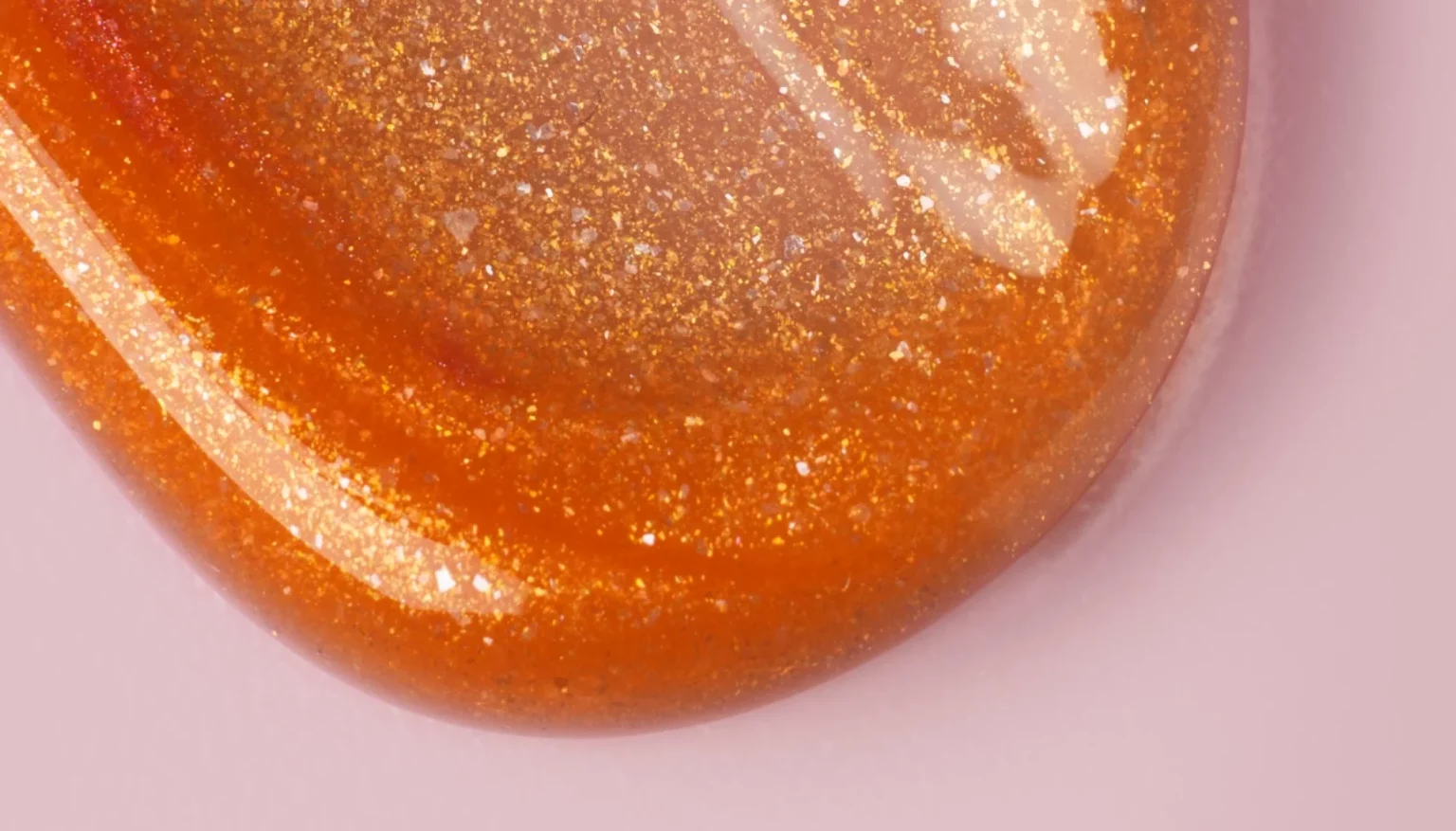From the intricate designs on product packaging to the texture and hues within, beauty product macro photography offers you a captivating glimpse into the fascinating world of cosmetics, skincare, and hair care. Through the lens of a camera, you can uncover hidden details, delicate gradients, and mesmerizing patterns that make these products truly exceptional.
An intriguing method to promote your beauty products, macro photography showcases stunning elements that otherwise might go unnoticed. In this article, we will tell you how to shoot a beauty product macro photography, so you can make your items stand out from your competition.
Essential equipment for macro beauty photography

To capture all the fine details, you need certain equipment. A high-quality DSLR or mirrorless camera with macro lenses, a tripod, and different lighting sources are essential to capture the true essence of your products. So, without further ado, let’s discuss them in detail.
Macro lenses
Macro lenses are among the most important pieces of equipment in macro photography. Designed to help you focus at close range, these lenses produce a 1:1 natural-size image – perfect for capturing even the most intricate details of your beauty products.
They come in various sizes, ranging from 35mm to 200mm focal length. While professionals can easily change and adapt them to different needs and requirements, beginners should use a medium macro lens. This means that the focal length should be between 100 mm and 150 mm, depending on which camera you want to use.
It is important to pay attention to the focal length because a short length means you have to get very close to the subject, while a longer focal length allows you to photograph it from a distance.
Although both types can be used for beauty products, when you get closer to the subject, you also create shadows and take away some light. This, in turn, can affect the image quality, and retouching in post-processing will take longer.
Tripods
Tripods are also essential for macro photography of beauty products, as they provide stability and minimize camera shake.
In close-up photography, even the slightest movement can blur the image, resulting in a loss of detail. If you mount the camera on a tripod, you can avoid this problem and achieve razor-sharp images.
Tripods also enable precise image composition and framing. In macro photography, it is important to position and align the subject carefully to capture the desired detail effectively. By using a tripod, you maintain the consistency of your composition and can make fine adjustments without moving.
Additionally, tripods enable longer exposure times, which can be useful when shooting in low-light environments. The stability of tripods allows for a longer exposure time without the risk of blurring or image degradation. This is particularly useful when trying to capture intricate textures and finishes of beauty products.
Overall, tripods play a crucial role in creating high-quality macro shots as they improve stability and control over image composition and allow for longer exposure times.
All in all, the choice of lenses and the use of a tripod are essential in macro photography, if you wish to obtain a professional final result. In the next paragraph, you will discover why lighting is important and how you can use it to showcase only the best side of your product.
Lighting sources for macro product photography

Lighting is a crucial element in macro photography as it directly impacts the overall impression of the image. The choice of lighting can significantly alter the perception of the product by highlighting its best features or concealing its flaws.
Various lighting techniques such as backlighting, side lighting, or diffused light can be employed to accentuate texture, emphasize certain areas, or create intriguing reflections.
Moreover, lighting can also affect the color accuracy of the product. Utilizing appropriate lighting helps to ensure that colors appear true to life, which is particularly essential when photographing beauty products where accurate representation is crucial.
In addition, lighting can also influence the mood and atmosphere of the photo. Soft, diffused light can create a romantic or ethereal mood, while strong, directional light can evoke a sense of drama or sophistication. Try experimenting with different lighting settings to achieve the desired effect and create visually appealing compositions.
Therefore, lighting plays a multi-faceted role in macro photography of beauty products, influencing detail, texture, color accuracy, and overall aesthetics.
Lighting and textures
When working with different textures in beauty macro photography, lighting is essential for drawing attention to the surface details and enhancing their visual impact. With smooth and reflective surfaces, such as glass or glossy packaging, it is important to control reflections and glare.
This can be achieved by using diffused lighting techniques such as softboxes or diffusers, which provide even illumination without harsh reflections. By carefully positioning the light, you can get a clean, polished look.
In contrast, rough or matte textures require a different lighting approach. These textures benefit from more directional lighting to create shadows and highlights that accentuate surface details.
By using a single light source or adjusting the positioning of multiple light sources, photographers can create shadows that emphasize the depth and texture of the product. This technique adds visual interest and helps to portray the tactile qualities of different textures so that they stand out in the photograph.
In addition, experimenting with different light angles and intensities can produce captivating shadow patterns, especially when working with textured surfaces. These shadows can emphasize the intricate details and create a visually stunning composition that adds depth and dimension to the image.
In summary, by matching lighting techniques to the texture of the product, you can effectively highlight its unique characteristics and create visually compelling macro photos of beauty products. Same is the case for Jewelry macro product photography.
Camera settings

A good camera is essential for photography, and for macro photography, two of the most important parameters and settings are focus and depth of field.
Camera focus refers to the sharpness and clarity of the subject in the image. When photographing beauty products, precise focus is crucial to capturing the fine details and textures of the product. Intricate patterns, surface finishes, or intricate designs on packaging are just some of the elements that benefit from a sharp focus.
A sharp image emphasizes the quality and craftsmanship of the product. To achieve sharp focus, choose a lens with F/11 or even F/16, giving you more flexibility in your work.
Depth of field refers to the distance used for an image in focus. It can be controlled by adjusting the aperture setting on the camera. In macro product photography, controlling the depth of field allows you to selectively focus on exact areas of the product while blurring the background. This technique draws attention to the main subject, showcasing the product in an aesthetically-pleasing way, creating a visually appealing composition.
In macro beauty photography, the depth of field is often narrow – just a few millimeters. Therefore, even the slightest movement can make a big difference. Aperture, focal length, and distance all influence the depth of field.
A long focal length, for example, ensures a narrow depth of field. A large aperture also reduces the depth of field, as does a short distance to the subject. To get a better image, you can put some distance between you and your subject while using the focus stacking technique. Therefore, you get a clear and sharp final image of your product.
These two settings, camera focus and depth of field help you take stunning and attention-grabbing images that show off the intricate details of your beauty products, making them visually appealing to potential customers.
How can CGI improve beauty product macro photography

A great alternative to traditional beauty product macro photography, CGI allows you to create the scenes you want in just a few clicks. Recreating your beauty product in 3D comes with several benefits, but the most important are the high-resolution result, ease of setup, and the ability to save time and money.
Getting high-quality images from a traditional macro photo shoot requires patience and technique. However, with CGI you can get them in minutes and change them as often as you want. For example, a physical product may have minor defects that, although not visible to the naked eye, are visible on camera. Because it was created with a program, a 3D product has a perfect shape and texture – a flawless copy of the original with no imperfections, no matter how close you get to it.
Additionally, the entire composition is more accessible if you create it digitally rather than traditionally. With just a few clicks, you can change the orientation of the product and add or remove different types of props. Additionally, you can change the colors and adjust the lighting to highlight only the best features of the beauty product. The angles and lighting are very important, especially in macro photography. And the ability to easily modify them ensures a stunning final image.
Last but not least, CGI helps you save money and time. Since the product is digital, there is no need to purchase the physical version of it or go through complicated setup steps. You can easily create a virtual representation that you can simply customize, edit and experiment with without the need for costly reshoots. Additionally, you can work on illustration from a location of your choice since you do not have to rely on a photography studio.
In summary, CGI is an effective tool for creating high-quality macro images of your beauty product. If you want a professional 3D version of your product quickly, all you need to do is provide us with a few images of your product, and we will take care of the rest. You can browse through our portfolio and draw inspiration on how you want your product to look, and we will bring your vision to life.
Wrapping up
To capture a striking and appealing macro beauty product photograph, pay close attention to details and carefully compose the shot. You can achieve this by mastering lighting techniques, using props or backgrounds that enhance the product’s features, or by using CGI to create a seamless image. With practice and a keen eye for aesthetics, you can create stunning visuals that will captivate your audience and leave a lasting impression.
FAQ
Is macro photography useful in marketing campaigns?
Yes, macro photography is useful in marketing campaigns as it helps you present only the best features of your beauty product. Moreover, if done digitally, you have several options for how to use the final illustration. You can use it directly on your website, on social media, or in brochures.
Are macro lenses good for product photography?
Macro lenses are good for product photography if the subject you wish to display has tiny details or small size. Jewelry or products with peculiar textures are the ones that benefit the most from a macro lens during a photoshoot.
What is the best focal length for macro product photography?
The optimal focal length range for capturing product photos is between 50mm and 200mm. This range enables you to take crisp, high-quality images that resemble real-life objects.


























